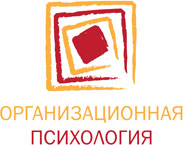
 |
Organizational Psychology |
Editorial officeAddress: 20, Myasnitskaya, 101000 Moscow, Russia
|
Andrey Sidorenkov1, Vadim Dorofeev2Structural model of the intragroup conflict in work groups
2018.
Vol. 8.
No. 3.
P. 8–28
[issue contents]
Purpose. The article presents the results of studying the factor structure of intra-group conflict in different small work groups on the basis of two dimensions — conflict levels (interpersonal, micro-group and group) and conflict types (job and subject). Method. 41 small groups (N = 323 employees) with different profiles of activity were studied: social services to the population, banking, design and production, trade, etc. The study was conducted through two questionnaires (a questionnaire of types of interpersonal conflict and a questionnaire of types of group and micro-group conflict) and a formalized method for identifying existing informal subgroups in the group. Survey of subjects was carried out on a computer using the “Group Profile — Universal” technology, which includes both questionnaires and the method for determining subgroups. The following methodsof statistical and mathematical analysis were used: factor analysis, AGNES (Agglomerative Nesting), binomial test. Findings. It has been established that the leading role in the formation of componentsin the conflict factor structure is played by levels, not by types of conflict. The structure of the conflict depends on the size of the group. In small groups it is represented by three relatively autonomous conflict levels, each of which includes two types of conflict. Among them interpersonal conflict is more important, and group conflict is less important. In the numerous groups in the conflict structure, amicro group conflict is distinguished separately in two types and separately — interpersonal and group conflict, which form a single whole. In each of the two structural models, at the interpersonal level, thesubject conflict is more significant, and at the micro-group and group levels, job conflict. Implicationsf or practice is defined by the fact that in measurement of the conflict and management of the conflict in specific production groups it is necessary to consider different levels and types of the conflict and alsogroup number. The value of the results lies in the empirical justification of the multidimensional model of the intragroup conflict and the revealed features of the manifestation of the conflict in different innumber small groups.
Citation:
Sidorenkov A., Dorofeev V. (2018). Strukturnaya model' vnutrigruppovogo konflikta v proizvodstvennykh gruppakh [Structural model of the intragroup conflict in work groups]. Organizacionnaâ psihologiâ (Organizational Psychology), vol. 8, no 3, pp. 8-38 (in Russian)
| |||||||||||||||